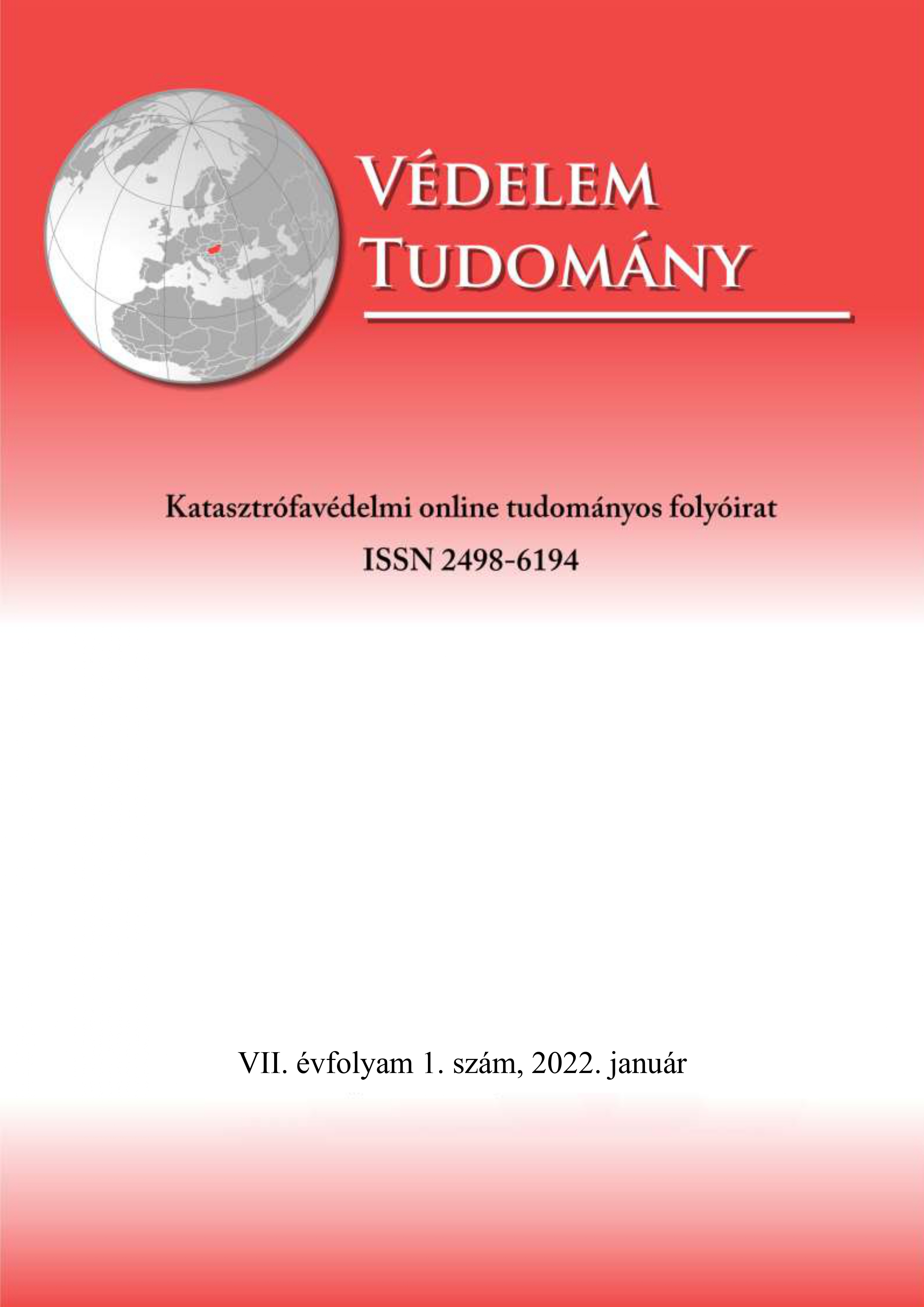A homlokzati tűzterjedés vizsgálati módszerének továbbfejlesztése
Absztrakt
A homlokzati tűzterjedés jelenségének vizsgálata a nemzetközi tűzvédelmi kutatások népszerű témája. Ezek célja főként a közelmúltban történt nagyobb homlokzati tűzeseteinek megértése, vizsgálati módszereken és szimulációkon keresztüli modellezése, valamint hasonló esetek nemzeti szabályozásokon keresztüli megakadályozása. Jelen cikk szerzője több éve a homlokzati tűzterjedés hazai módszerének továbbfejlesztési lehetőségeit kutatja. Cikkében összefoglalja a homlokzatokkal kapcsolatos hazai tűzvédelmi célkitűzéseket és azok megvalósulását, a homlokzati tűzterjedés jelenségét, a jellemző szerkezeteket. Röviden bemutatja a jelenleg alkalmazott nemzeti vizsgálati szabványt, majd azokat a lényeges szempontokat, melyek elemzésével és részletes vizsgálatával megalapozható volt annak kidolgozása.
Hivatkozások
L. Boström, A. Hofmann-Böllinghaus, S. Colwell, P. Tóth, J. Anderson, D. Lange, R. Chiva, I. Móder and J. Sjöström, Development of a European approach to assess the fire performance of facades, Luxemburg: European Commission, 2018.
J. Anderson, L. Boström, R. Chiva,, E. Guillaume, S. Colwell, A. Hofmann and P. Tóth, “European approach to assess the fire performance of façades,” FIRE AND MATERIALS, vol. Interflam 2019: Facades, pp. 1-11, 2020.
S. T. McKenna, N. Jones, G. Peck, K. Dickens, W. Pawelec, S. Oradei, S. Harris, A. A. Stec and T. R. Hull, “Fire behaviour of modern façade materials - Understanding the Grenfell Tower fire,” Journal of Hazardous Materials, vol. 368, pp. 115-123, 2019.
S. Colwell and B. Martin, Fire performance of external thermal insulation for walls of multistorey buildings, London: BRE, 2003.
“Fire Death Rate Trends: An International Perspective,” Topical Fire report Series, vol. 12, no. 8, pp. 1-8, 2011.
MSZ 14800-6:2009 Tűzállósági vizsgálatok. 6. rész: Tűzterjedés vizsgálata épülethomlokzaton, Budapest: MSZT, 2009.
Az 54/2014. (XII. 5.) BM rendelet az Országos Tűzvédelmi Szabályzatról.
K. S. Oláh, A síkból kimozdított épülethomlokzatok tűzterjedési vizsgálata mérnöki módszerekkel. Szakdolgozat., Budapest, 2020.
TvMI 11.2:2020.01.22. Építményszerkezetek tűzvédelmi jellemzői, Budapest: OKF, 2020.
“Use of Combustible Cladding Materials on Buildings Exceeding 18m in Height. BCA Technical Guidance Note 18. Issue 1 Jun 2015.,” June 2015. [Online]. Available: http://buildingcontrolalliance.org/wp-content/uploads/2017/04/BCA-GN-18-Use-ofcombustible-cladding-materials-Rev-1-Jun-15.pdf. [Accessed 10 1 2021].
TvMI 1.4:2020.07.20. Tűzterjedés elleni védelem., Budapest: OKF, 2020.
J. Kinowski, B. Sedłak és P. Sulik, „External wall claddings - Study on impact of fixing,” in DOPPIAVOCE, 2017.
P. L. Tóth, "Új nemzeti szabvány a homlokzati tűzterjedés vizsgálatára – MSZ 14800-6:2020," Védelem Katasztrófavédelmi Szemle, vol. 28, no. 4, pp. 19-23, 2021.
MSZ 14800-6:2020 Tűzállósági vizsgálatok. 6. rész: Tűzterjedés vizsgálata épülethomlokzaton, Budapest: MSZT, 2020.
P. L. Tóth, “Mozgatható szárnyfal integrálásának lehetőségei az MSZ 14800-6:2009 vizsgálati szabvány továbbfejlesztése során,” Hadmérnök, vol. 12, no. 1, p. 7, 2017.
I. Móder, Á. Varga, P. Geier and E. Rajna, “Brief summary of the Hungarian test method (MSZ 14800-6:2009) of fire propagation on building façades,” MATEC Web of Conferences, vol. 46, no. 01002, pp. 1-6, 2016.
N. White and M. Delichatsios, Fire Hazards of Exterior Wall Assemblies Containing Combustible Components, SpringerBriefs in Fire, 2015.
K. Lu, L. Hu, F. Tang, M. Delichatsios, X. Zhang and L. He, “Facade flame heights from enclosure fires with side walls at the opening,” Procedia Engineering, vol. 62, pp. 202-210, 2013.
O. Lalu, BRE Global Client Report. P117805-1000 Issue: 1. Characterisation of medium fire exposure fuel source, https://www.ri.se/sites/default/files/2021-09/EU%20Cladding%20Project%20ReportOLTL-v1.pdf: BRE Global Ltd., 2021.
L. Boström, R. Chiva, S. Colwell, S. Howard, P. Tóth, A. Hoffmann-Böllinghaus, F. Dumont, R. Olofsson, J. Anderson and J. Sjöström, “Assessment of fire performance of facades. Draft revision 1.,” 7 5 2020.
L. Boström, R. Chiva, A. Hofmann-Böllinghaus, P. Tóth, O. Lalu, F. Dumont, J. Anderson, J.
Sjöström and R. Olofsson, “Finalisation of the European approach to assess the fire performance of façades. Draft progress report 2,” 2021.
P. Tóth, “A homlokzati tűzterjedés vizsgálati és értékelési szempontjainak bővítése toxicitási jellemzőkkel,” Védelem Tudomány: Katasztrófavédelmi Online Tudományos Folyóirat, vol. 2, no. 3, pp. 1-23, 2017.
A. Tóth, “Hervay Bence féle perspektivikus távolságmérés,” 25 09 2021. [Online]. Available: https://johetajava.hu/hu/post/hervay-perspective-measure. [Accessed 27 09 2021].
J. Sjöström, J. Anderson, F. Kahl, L. Boström and E. Hallberg, Large scale exposure of fires to facade - Initial testing of proposed European method. RISE Report 2021:85,, Borås: RISE Research Institutes of Sweden, 2021.




